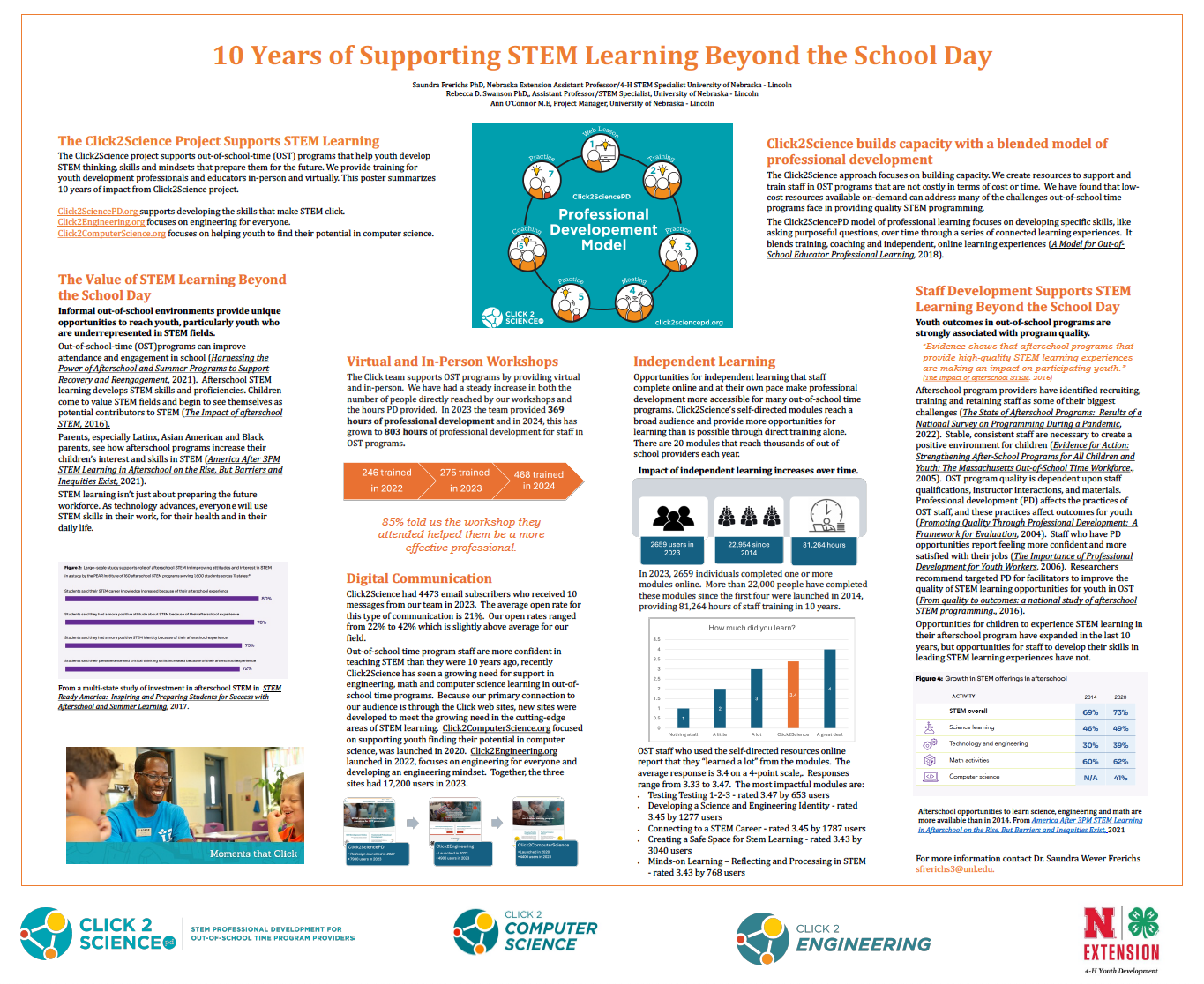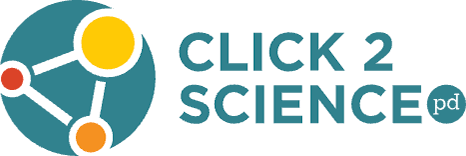Research & Evaluation
10 Years of Supporting STEM Learning Beyond the School Day

This poster describes how the impact of Click2Science support for out-of-school time programs that help youth develop STEM thinking, skills and mindsets that prepare them for the future. Use the link below to download a written version of the 10 year summary with links to research articles.
Click2Science_10YearsSupportingSTEM
Journal Articles from the Click2Science team
A Model for Out-of-School Educator Professional Learning
Quality out-of-school time (OST) programs for youth are limited by a lack of professional learning opportunities for staff and volunteers that are based upon solid learning theory, affordable, and scalable for a diverse field. The Click2Science project is an innovative model for professional learning experiences that support staff and volunteers in providing high-quality STEM (science, technology, engineering, and math) learning opportunities for youth. This model emphasizes the importance of visual, social, and experiential learning experiences with reflection and application to practice.
The model leverages technology and in-person support in a cycle of professional development (PD) experiences. The model allows staff and volunteers in OST programs to develop their instructional skills in ways that are embedded in the actual practices of their program. In this article, each part of the PD cycle is analyzed using constructivist learning theories to encourage adult educators to replicate this model in other fields. A brief review of promising research about the effectiveness of the model concludes the description of this approach to PD.
Wever Frerichs, S., Pearman Fenton, M. S., & Wingert, K. (2018). A Model for Out-of-School Educator Professional Learning. Adult Learning, 29(3), 115-122. https://doi.org/10.1177/1045159518773908
Reports by Nebraska Academy for Methodology, Analytics and Psychometrics (MAP Academy)
Empowering Out-of-School-Time Educators: A Computer Science Professional Development Toolkit Pilot Study (2019)
This evaluation focuses on piloting the Click2Science Computer Science toolkit of resources in four states. Each state participated in a Train-the-Trainer program in the Spring of 2019, then used the toolkit to provide training for afterschool program staff, teachers, and volunteers. Feedback was collected from both the trainers and the trainees via focus groups/interviews, lesson plans, and self-confidence surveys.
The results demonstrated a positive impact on the perceptions of frontline staff and volunteers. Trainers found the resources helpful, particularly the videos. View the full report from this evaluation, Empowering Out-of-School-Time Educators.
Comprehensive Triangulated Evaluation (2017)
Researchers from the MAP Academy completed a comprehensive triangulated evaluation of Click2Science, which included interviews with site leaders and frontline staff, pre/post observations of frontline staff using the Dimensions of Success (DoS) observation tool, and youth survey data. Four YMCA locations participated in five hours of training activities using Click2Science and Better Kid Care materials.
See a summary of the findings from the Comprehensive Triangulated Evaluation Triangulation Infographic. View the full report from this evaluation TriangulatonReport
Multiple-Case Study of Click2Science Early Adopters (2016)
This report documents the main themes that emerged from interviews with individuals involved in out-of-school time (OST) educational activities across four states. Ten interviews were conducted using either phone or video-conferencing technology (e.g., Skype). Participants were included if they were an early adopter/participant with Click2Science. Individuals identified themselves broadly as network or site-level representatives and professional development coach/trainers. The report provides a summary of the context of each location and common themes found in participants’ experiences with Click2Science across the four states. Participants provided information on the OST context in their particular location and their use of Click2Science resources.
General feedback from the early adopters highlighted the flexibility, utility, and applicability of Click2Science materials for their OST programs. View the full report from this evaluation Multiple-Case Study of Click2SciencePD
